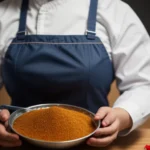From Street Food to Banquets: The Many Faces of Chinese Culinary Culture
Introduction
China, a vast and diverse country with a rich culinary history, is known for its delicious and varied cuisine. From street food to banquets, Chinese food encompasses a wide range of flavors, ingredients, and cooking techniques. In this article, we will explore the many facets of Chinese culinary culture, from the humble street vendor to the elaborate banquet table.
1. Street Food: A Taste of Authenticity
One of the best ways to experience the true essence of Chinese cuisine is through its street food. Whether it’s steamed dumplings, spicy noodles, or grilled skewers, street vendors offer a wide array of delicious and affordable snacks that showcase the diverse regional flavors of China.
2. Food Markets: A Feast for the Senses
In Chinese cities, food markets are a bustling hub of activity where locals gather to buy fresh produce, meats, and seafood. These markets offer a glimpse into the daily lives of Chinese people and provide an opportunity to sample a wide variety of traditional dishes and unique ingredients.
3. Tea Houses: A Tradition of Hospitality
Tea houses have been an integral part of Chinese culture for centuries, providing a place for friends and family to gather, relax, and enjoy a cup of tea. In addition to tea, these establishments often serve a selection of light snacks and dim sum, making them a popular destination for both locals and tourists.
4. Dim Sum: A Culinary Delight
Dim sum, a traditional Chinese brunch consisting of small, bite-sized dishes, is a popular culinary tradition that originated in the southern regions of China. From steamed buns and dumplings to fried spring rolls and savory pastries, dim sum offers a tantalizing array of flavors and textures.
5. Hot Pot: A Shared Experience
Hot pot is a communal dining experience that involves cooking a variety of ingredients, such as thinly sliced meats, seafood, and vegetables, in a simmering pot of flavored broth at the center of the table. This interactive and social meal is a favorite among Chinese families and friends, especially during the winter months.
6. Sichuan Cuisine: A Fiery Flavor Explosion
Sichuan cuisine, known for its bold and spicy flavors, is a popular regional cuisine that has gained international acclaim. Sichuan dishes often feature the unique flavor of Sichuan peppercorns, which impart a numbing and tingling sensation to the palate, making for a truly unforgettable dining experience.
7. Cantonese Cuisine: A Delicate Balance of Flavors
Cantonese cuisine, hailing from the southern province of Guangdong, is characterized by its emphasis on fresh ingredients and simple cooking techniques. Known for its delicate flavors and subtle seasonings, Cantonese dishes often showcase the natural taste and texture of the ingredients.
8. Peking Duck: A Timeless Classic
Peking duck, a dish that dates back to the imperial kitchens of ancient China, is a culinary masterpiece that has become synonymous with Chinese fine dining. The crispy skinned duck, carved tableside and served with thin pancakes, scallions, and hoisin sauce, is a luxurious and indulgent dining experience that is favored by food connoisseurs around the world.
9. Chinese Banquets: A Feast for the Eyes and Palate
Chinese banquets are elaborate and multicourse meals that are typically reserved for special occasions, such as weddings, birthdays, and festivals. These feasts feature a wide array of dishes, from appetizers and soups to mains and desserts, all meticulously prepared and beautifully presented to impress and delight guests.
10. Regional Variations: A Culinary Mosaic
China is a vast and diverse country with a multitude of regional cuisines, each with its unique flavors, ingredients, and cooking techniques. From the fiery flavors of Sichuan to the delicate dishes of Canton, the regional variations of Chinese cuisine offer a rich tapestry of culinary experiences that reflect the country’s diverse culture and history.
11. Fusion Cuisine: A Modern Twist
In recent years, Chinese chefs and restaurateurs have been experimenting with fusion cuisine, blending traditional Chinese flavors with international influences to create innovative and exciting dishes. From Chinese-Italian pasta to Chinese-Mexican tacos, fusion cuisine showcases the creativity and versatility of Chinese culinary culture.
12. Food Tourism: A Gastronomic Adventure
Food tourism has become increasingly popular in China, with more and more travelers seeking out authentic culinary experiences that offer a taste of local culture and traditions. Whether it’s sampling street food in bustling night markets or dining at a Michelin-starred restaurant, food tourism provides a unique and immersive way to explore the many flavors of Chinese cuisine.
13. Culinary Heritage: A Legacy of Tradition
Chinese culinary culture is deeply rooted in tradition and history, with many dishes and cooking techniques passed down through generations. From ancient cooking methods to traditional ingredients and recipes, Chinese cuisine continues to evolve and adapt while preserving its rich heritage and culinary legacy.
14. The Future of Chinese Cuisine: A Global Influence
As Chinese cuisine continues to gain popularity and recognition on the global stage, the future of Chinese culinary culture looks bright and promising. With the rise of celebrity chefs, food bloggers, and social media influencers, Chinese cuisine is reaching a wider audience than ever before, inspiring people around the world to explore and appreciate the many flavors of China.
15. Conclusion
From street food to banquets, Chinese culinary culture is a vibrant and multifaceted world of flavors, ingredients, and traditions. Whether you’re savoring a steaming bowl of noodles at a street vendor or dining on a lavish banquet feast, the many faces of Chinese cuisine offer a tantalizing array of culinary experiences that celebrate the rich and diverse food culture of China. So, next time you’re craving a taste of something new and exciting, why not embark on a gastronomic journey through the many flavors of Chinese culinary culture?
















